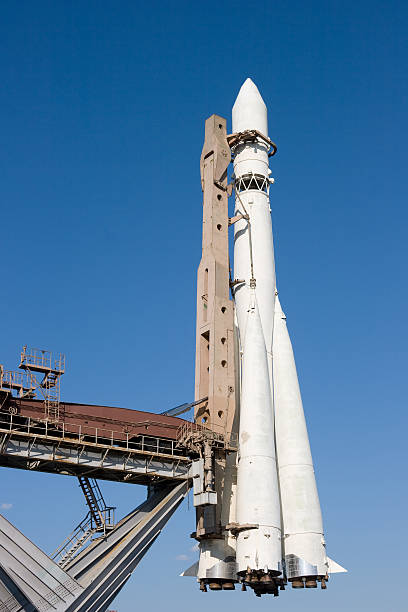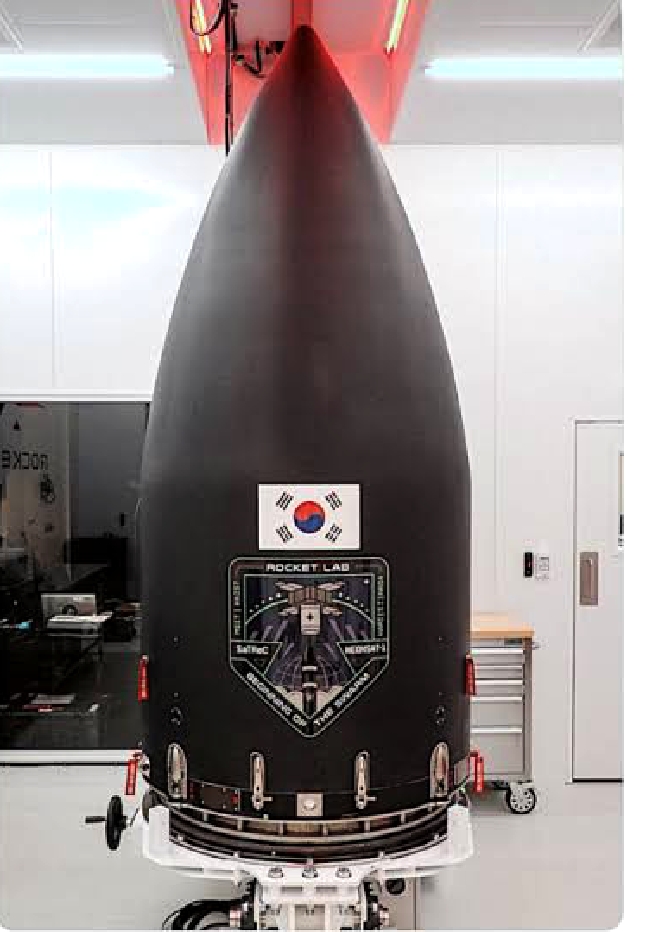NASA Solar sail Rocket NASA’s groundbreaking innovations in solar sail technology herald a new era of interstellar exploration in the vastness of space, where conventional means of propulsion are constrained. Among its remarkable undertakings stands the joint effort with Rocket Lab, an association ready to reform space travel. Spacecraft propelled by the gentle but inexhaustible force of sunlight are the result of combining Rocket Lab’s innovation with that of NASA.At the core of this historic organization lies the idea of the sun oriented sail — a wonder of designing motivated essentially’s exquisite effortlessness. Spacecraft are pushed through the cosmos with an unparalleled efficiency and endurance thanks to these sails, which take advantage of the momentum generated by sun-emitted photons. The sails are a symbol of humanity’s quest to reach beyond the confines of this world and reach for the stars as they unfold against the backdrop of the infinite cosmos.The NASA Solar Sail Rocket Lab spacecraft is the culmination of this team effort and exemplifies the spirit of discovery and ingenuity. These spacecraft are beacons of hope and inspiration for future generations, fueled by the collective vision of scientists and engineers and outfitted with cutting-edge technology.Past the bounds of our air, where the laws of material science rule, these heavenly vessels explore the divine oceans, impelled by the delicate stroke of daylight. Their process encapsulates the quintessence of human desire and the tenacious quest for information. They carry with them the dreams of a lot of people who want to find answers to the mysteries of the universe and set out on a path to a better tomorrow as they travel across the vastness of space and time.

Nasa Solar System Information
NASA’s unmatched dedication to deciphering the mysteries of our solar system is driven by a never-ending thirst for knowledge and a profound fascination with the celestial bodies in our immediate vicinity. With an abundance of space apparatus, telescopes, and meanderers available to them, NASA researchers vigorously investigate each side of our planetary group, gathering priceless information that reshapes how we might interpret the universe. NASA missions provide a window into the diverse landscapes and dynamic processes that define each planet, from Mercury’s scorching surface to Pluto’s icy depths. Through fastidious perception and examination, NASA analysts uncover hints about the starting points of our planetary group, the development of planets, and the potential for extraterrestrial life. Besides, NASA’s endeavors reach out past simple investigation; Through the dissemination of their findings to the general public and the cultivation of awe and wonder about the wonders that lie beyond our own blue planet, they strive to inspire and educate. In essence, NASA’s search for information about the solar system exemplifies humankind’s inborn curiosity and unrelenting desire to investigate the unknown, test the limits of what is scientifically feasible, and take our collective consciousness to new heights.

What Does Nasa Use To Get To Space
To get to the immense scope of room, NASA utilizes a plenty of state of the art innovations and complex frameworks, each carefully intended to beat the imposing obstructions presented by the threatening climate past Earth’s environment. The famous rockets that NASA uses are at the top of its arsenal. These towering behemoths of engineering prowess are the primary means of propelling spacecraft beyond our planet. Among these rockets, the powerful Saturn V, the workhorse Hawk 9, and the impending Space Send off Framework (SLS) stand as transcending images of human inventiveness and desire, fit for conveying payloads going from satellites to space explorers to far off heavenly objections. However, arriving at space isn’t simply an issue of beast force; Additionally, it requires sophisticated navigational skills and delicate precision. In order to accomplish this, NASA employs cutting-edge propulsion and guidance technologies, such as reaction control thrusters and inertial navigation systems, to guarantee the precise trajectory and orientation of spacecraft throughout ascent and orbital maneuvers. Besides, once in space, NASA depends on a complicated organization of ground-based global positioning systems and correspondence satellites to keep in touch with their missions and give vital telemetry information. In addition, NASA’s spacecraft are outfitted with a wide variety of scientific instruments and experimental payloads that are tailored to the specific goals of each mission, such as investigating the depths of our solar system, studying distant galaxies, or carrying out experiments in microgravity aboard the International Space Station (ISS). Fundamentally, NASA’s capacity to arrive at space is a demonstration of the aggregate exertion of thousands of researchers, designers, and experts working enthusiastically to push the limits of human investigation and open the mysteries of the universe. Through development, constancy, and sheer assurance, NASA keeps on preparing towards a future where the marvels of room are reachable for all humankind.

How To Launch A Rocket Into Space
Sending off a rocket into space is a carefully arranged expressive dance of science, designing, and planned operations, requiring exact coordination and immaculate execution at each phase of the excursion. Extensive planning and preparation begin long before liftoff to guarantee the mission’s success and safety. The rocket and its payload are fastidiously planned by engineers with thought given to optimal design, primary respectability, and the push to-weight proportion to endure the gigantic powers of send off. After the rocket is assembled and tried, it goes through a progression of severe checks to ensure that each part works right. In the mean time, mission organizers compute the ideal send off window, considering variables like orbital mechanics, weather patterns, and airspace limitations.The rocket is brought to the launch pad in advance of launch day and carefully erected there. The countdown begins after final checks are made to ensure that all systems are operational. At the times paving the way to takeoff, the unease is intense as architects and mission control faculty screen each part of the rocket’s exhibition. Finally, as the countdown approaches zero, the rocket’s engines roar to life and send a torrent of smoke and fire into the sky.During rising, the rocket follows a foreordained direction, directed by a modern organization of installed PCs and ground-based global positioning systems. The rocket stages separate as it ascends higher into the atmosphere, reducing weight and increasing efficiency.Finally, the payload shows up at the edge of room, where it is conveyed into space or starts its trip to far away heavenly complaints. Nonetheless, there are gambles related with sending a rocket into space. Risks like weather changes and mechanical failures must be anticipated and mitigated by mission planners. What’s more, the impacts that rocket dispatches have on the climate should be painstakingly thought of, and endeavors are being made to foster drive frameworks that are less destructive to the climate and diminish how much space trash. Typically, launching a rocket into space is a demonstration of human inventiveness and desire to explore the universe’s mysteries and push the experimental limits. Joint effort, resourcefulness, and sheer assurance are the means by which mankind keeps on trying to achieve the impossible as it endeavors to more readily figure out the universe and the unexplored world.

In the field of space technology, The Rocket and Satellite Company is a shining example of groundbreaking innovations that extend humanity’s reach into the cosmos. This company, which uses cutting-edge design and logical prowess to change space travel, exemplifies the spirit of inventiveness and aspiration. It was founded on the principle of pushing the limits of what is possible. The Rocket and Satellite Organization’s essential objective is to make state of the art rockets and satellites for a great many purposes, including correspondences, Earth perception, logical examination, and profound space investigation. This organization is at the very front of forming the eventual fate of room investigation with a different arrangement of worldwide associations and missions. By collaborating with government agencies, private businesses, and educational establishments to advance technology and foster creativity, The Rocket and Satellite Company paves the way for a future in which everyone has access to space. The Rocket and Satellite Organization continues to be steadfast in its commitment to pushing the boundaries of what is possible, inspiring generations to support its strong vision and unwavering dedication to the search for information and disclosure as human curiosity about the universe continues to grow.

Nasa Nearby planet group Outline
An enrapturing venture through the different cluster of planets, moons, space rocks, and comets that make up our planetary group is given by NASA Nearby planet group Outline, which gives a thorough gander at the divine ponders that make up our enormous local area.Each celestial body has its own mysteries and scientific significance, from Mercury’s fiery hell to Pluto’s icy depths. In order to discover the secrets of our solar system, NASA researchers carry out ground-breaking missions, make use of cutting-edge technology, and carefully observe it.They do this to shed light on the origins, evolution, and possibility of life beyond Earth in the solar system. Whether focusing on the rough demeanor of Jupiter, testing the subsurface spans of Europa, or uncovering the secrets of Mars’ old past, NASA’s examination attempts yield huge encounters into the strong powers that shape our tremendous porch. In addition, NASA’s commitment to public outreach and education ensures that the wonders of our solar system are accessible to everyone, inspiring future generations of space enthusiasts, engineers, and scientists to continue their research. On a very basic level, NASA Planetary gathering Framework fills in as an exhibition of humankind’s ravenous premium and resolute mission to research the dark, empowering a more significant understanding of our situation in the massive extent of the universe.

Tesla Electric Vehicle The Phenomenon